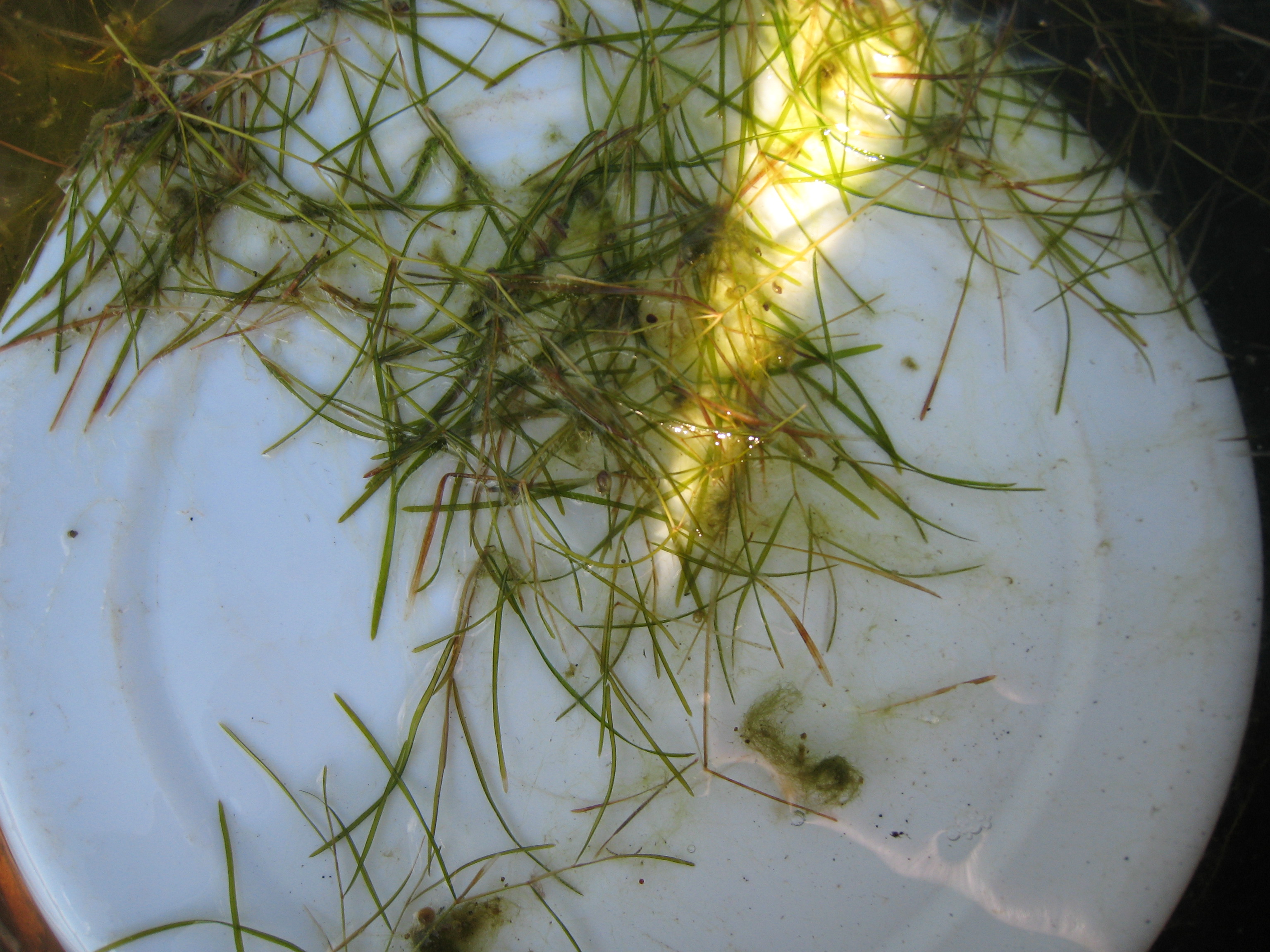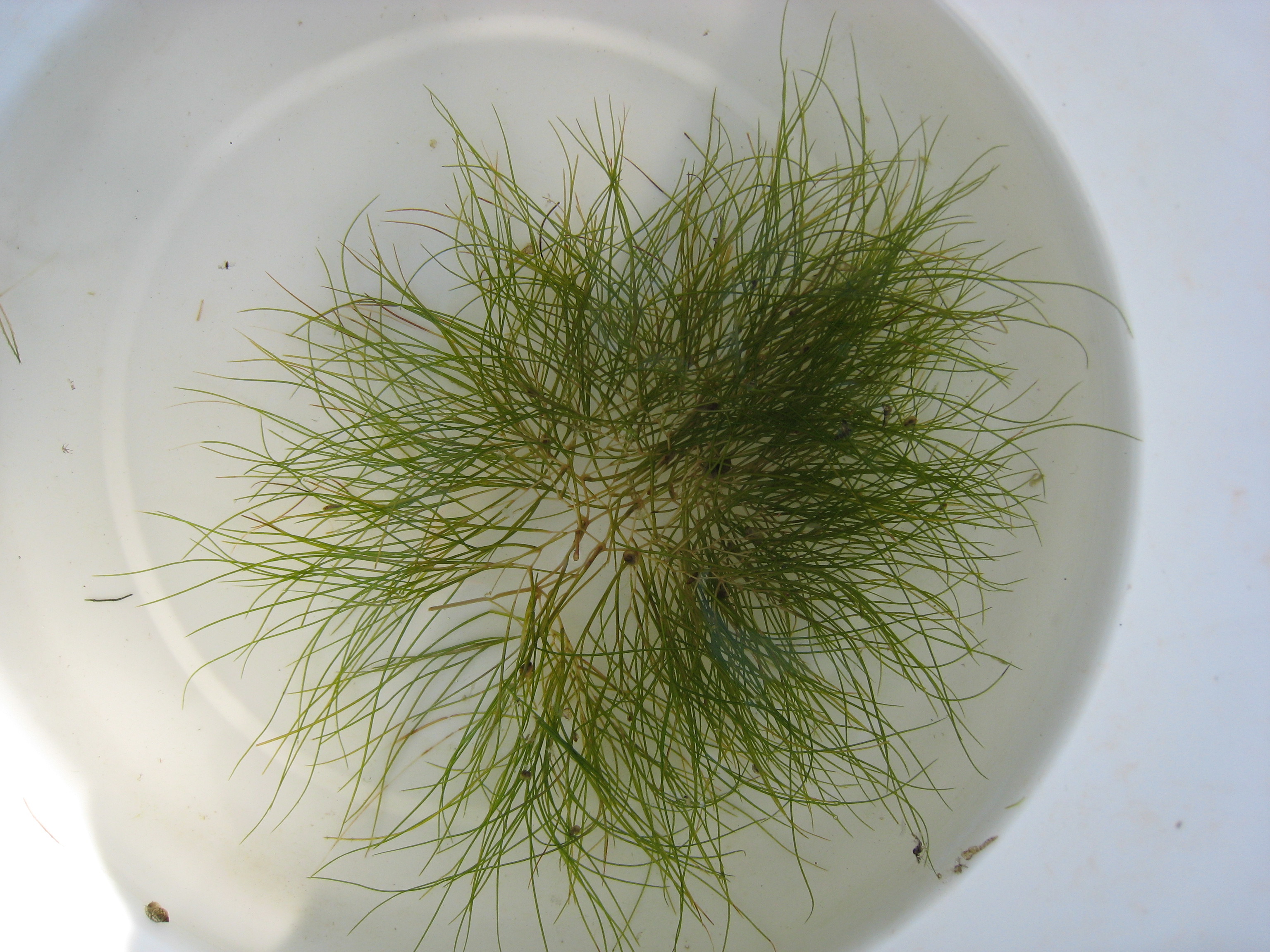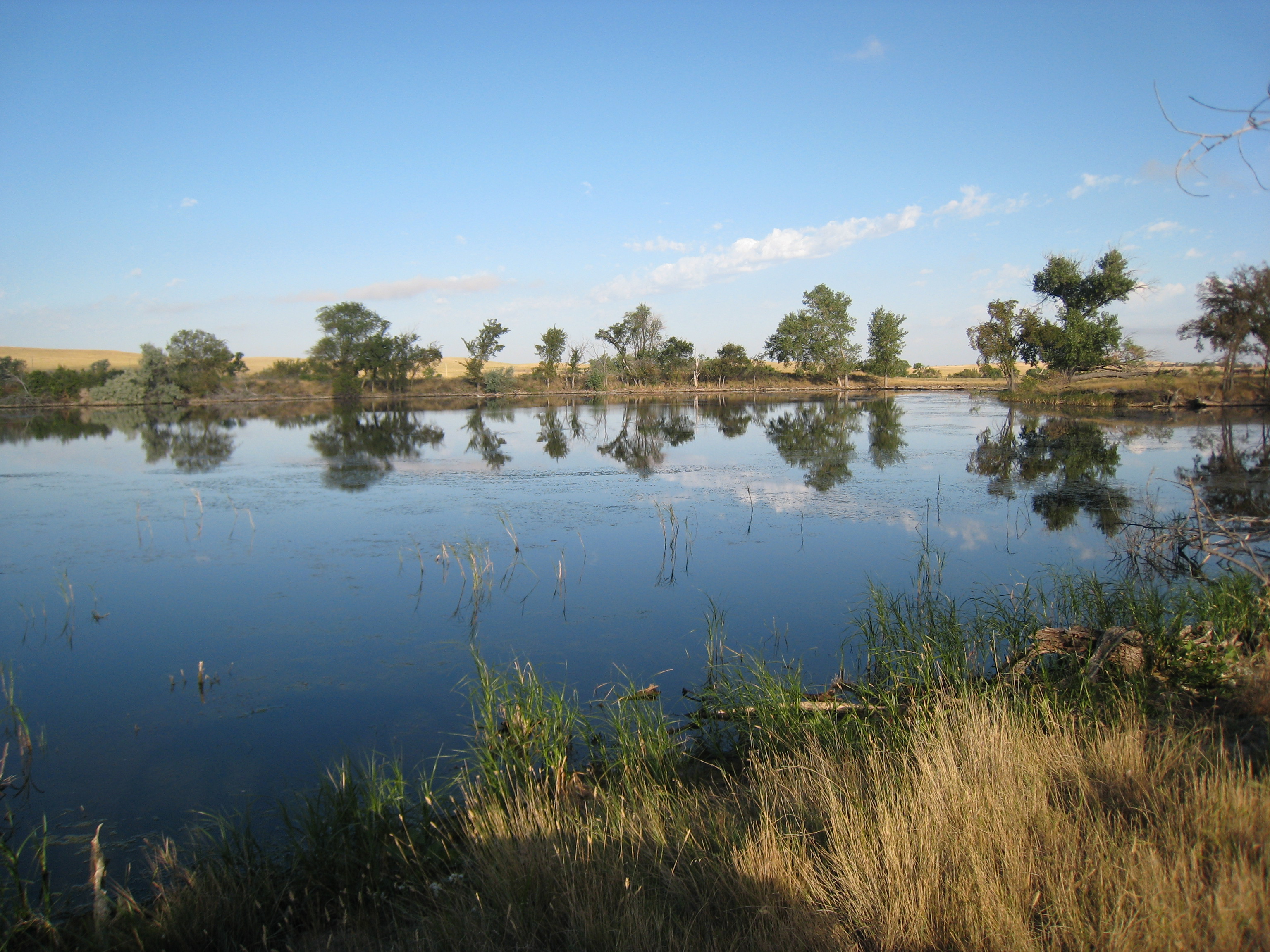Welcome to PB Dan. Go to
www.aquaplant.com. It is Texas A & M's website of pond weeds. What you have is an emergent plant. You can identify it there and get management options. There are also some guys at SDSU who know a little about pond water and the plants that mess it up.
10 to 12 acres of choked weeds is a lot of spraying. I don't think I would mess with it this year. It'll be freezing in your area soon.
Hey Dave, the correct address is
http://aquaplant.tamu.edu/. However, the URL "www.aquaplant.com" is for sale, if you have $21,600 laying around.

DakotaDan: as Dave mentioned, next spring might be a better time to address the multiple species of "
SUBMERGED " plants shown in your pictures (Eurasian watermilfoil, slender pondweed?, sago pondweed?, etc).
Thanks,
I have a local crop duster that can spray a mixture of 24d and round up both lables saying they are safe for fish and water at a boatload less than I have been able to source any type a grainular treatment. Does anyone have any thoughts or experience with this?? When an how often do I need to spray? Is this something I will have to continue to do or is their a biological method?
Roundup ***, and other "terrestrial-labeled" formulation of glyphosate are not intended nor "safe" for aquatic treatments.
"Aquatic" glyphosate brands (i.e. AQUANEAT, RODEO, AQUAMASTER, etc, etc) primarily differ from the terrestrial labeled version (RoundUp) by the aquatic formulations' lack of a surfactant. Thus, it is the surfactants present in Roundup and other terrestrial-labeled glyphosates that render them inappropriate for aquatic use.
All of this is irrelevant in your case, since glyphosate (under any brand-name) will offer NO BENEFIT for the species depicted in your photos.
On the other hand, using a liquid 2,4-D to treat your lake's submerged weeds represents an off-label (illegal) use - AND would potentially impact only the Eurasian watermilfoil (and none of the other submerged species). Plus, surface-applications for submerged species are far from desirable. So, 2,4-D isn't a viable option in many respects.
Query your local "crop duster" regarding his experience with aquatic treatments, and whether Roundup or liquid 2,4-D are legal and legitimate for your situation. If he says "yes", head for the exit.
Your best bet for the species shown in your photos will likely be fluridone (depending on if and how much water your lake normally transitions during the June-through-Aug window).
Hy Kelly
I was planning on just jumping into my little pond and just raking the pond weed out.
( pond about 6ft deep until this last rain No about 8ft)
Then netting everything that float loose. I have some large talpia but I guess they just not into the Texas pond weed.
Pond about 1/2 to 3/4 acres. You being so close by thinking you might just come by and show me. lol.
Kelly:
What is the helicopter used for in the pic on the website?
Kelly:What is the helicopter used for in the pic on the website?
What helicopter, and what website?
Oh, I got it.... Some aquatic herbicides (namely Aquathol K) have a higher density than water and will sink to some degree within the water-column - which is a characteristic that permits surface-application under certain circumstances, especially when a polymer sinking-agent is tank-mixed. However, weed-growths targeted in deeper water are much more effectively treated with weighted drop-hoses from a boat - or granular products applied by boat, plane or helo.
btw: Choppers are also used for large-scale topical applications to floating and emergent weeds.
Pay attention to Kelly. He is THE MAN when it comes to aquatic chemicals.
OK, I might have been a little flippant when I used the terms 24d and Round up. I ment to say it was their manufacturers Aquatic version which states on the lable that is is safe for fish. Also, my crop duster who sits on the board of the states weed and pest control commision told me upfront that he had never done anything with water.
I now understand that Round up does not address the weeds in my pond but I did find an artical on 24d from the state of washington that was interesting.
http://www.ecy.wa.gov/programs/wq/plants/management/24DStrategies.htmlHere is my real problem. Its a 10 acre lake and I'm not made of money. I can crop dust the whole lake for $300. The Whitecap Fluridone will cost $2,000 for the chemical alone and I have no way to apply it unless you can apply this stuff from the air. Can You?
Is there anything you can apply from the air that will work??
Looking for a cost effective method.
Is this one he has "Coon-tail moss"?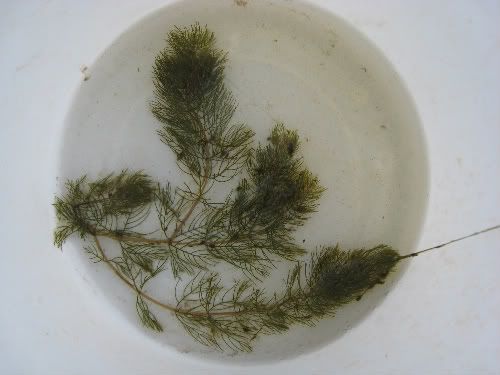
The above plant is Eurasian watermilfoil (EWM). I labeled guesses for the other plants in the below image. I'm not sure if the the other plants range into the Dakotas. However, EWM is a non-native specie in the US. So, the other plants could have hitched a ride into the lake along with the EWM.
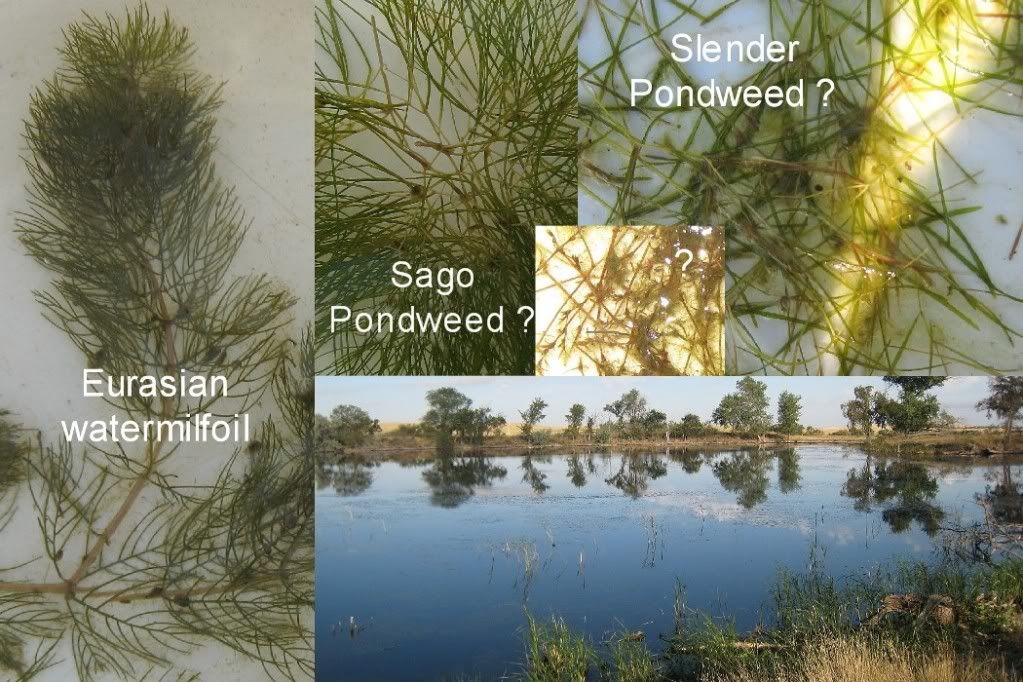
Positive plant-IDs from sharply-focused images are much more feasible with a single plant shown against a contrasting background - with a coin added for scale-reference.
DD: Depending on your lake's depth and inflo/outflow habits, I think you could manage all three species for far less than $2k/yr - but only if the projected results correlate with your ultimate veg-mgmt goals. However, it is likely that two consecutive annual treatments would be required - regardless of the selected product or application method (and again, depending on your objectives).
If desired, send me your lake's coordinates and a reasonably accurate estimate of the OVERALL average-depth. Also, when would you project your lake to reach 55/60F next spring?
LAT: 44°17'51.84"N
LONG: 102°15'45.32"W
Half of the lake is 5' and the other half by the dam is 8' to 10' deep. Overall I would say it averages 7'. The lake will probubly get to 60F next may/june.
If you google earth this lake you will see that the picture is from two years ago when it was dry.
Hey, I really apprecaite the input.
P.S. My goals would be to have someplace my kids could swim and have some reasonable fishing. I know I need some weed but I currently have 80 to 90 percent coverage.
P.P.S. I added some more pictures I had. Not very good but what the heck.
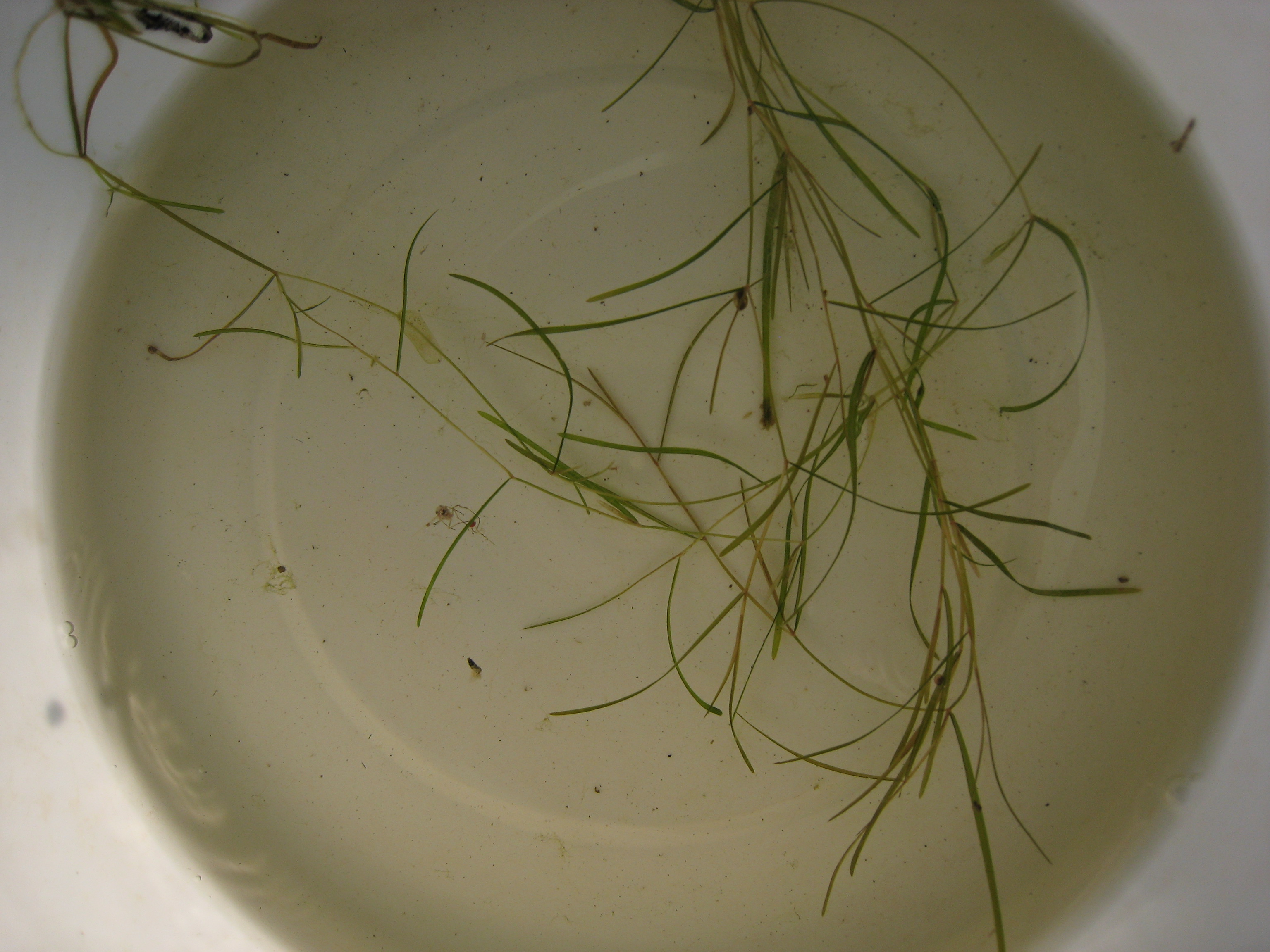

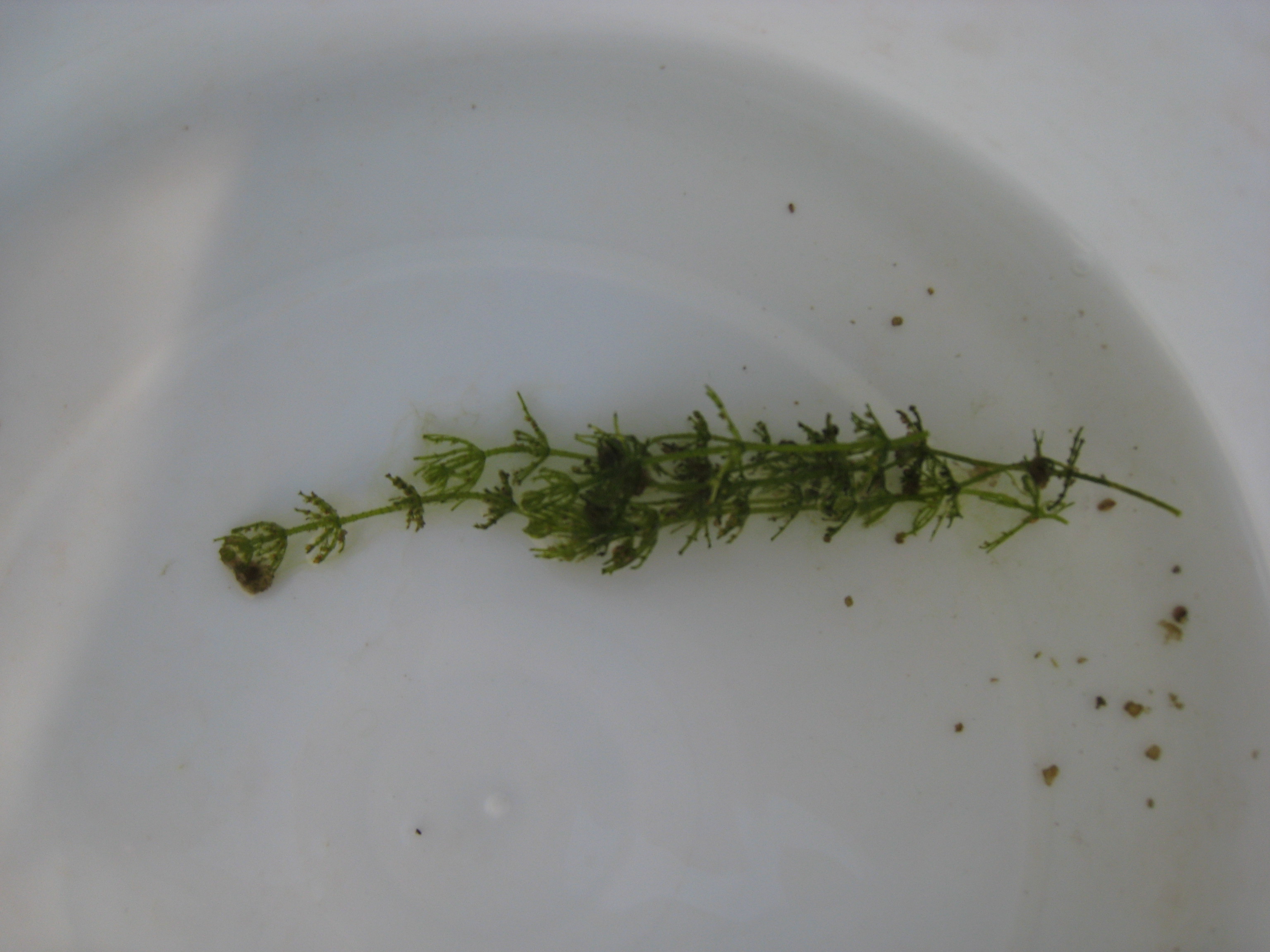
DD:
Regarding the last plant. Does it get kinda brittle and smell skunky when it's rubbed between your hands and broken up?
P.P.S. I added some more pictures I had. Not very good but what the heck.
But, your latest pics show more details and enabled positive IDs. I labeled a few of these details, primarily so others can see the level of detail that is sometimes needed for positive identification.
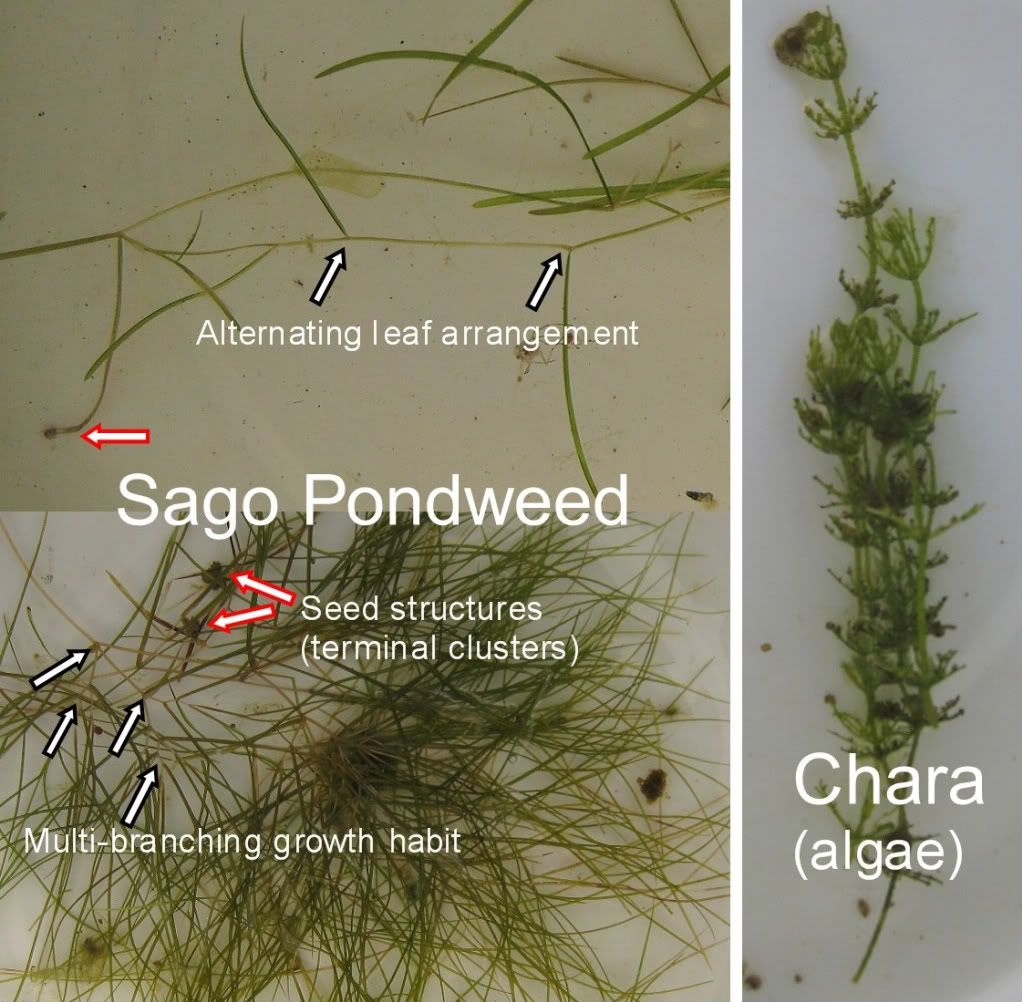
Based on those coordinates, I assume you like your privacy

You're correct about the satelite image's date. Unfortunately, the eye-in-the-sky doesn't refresh images of rural areas very frequently. Wished there was an aerial that better displayed the lake's perimeter.
First regarding the last plant (Chara) there is not much of it and I never got a chance to smell it so I dont know.
Next I have attached a .jpeg with the outline of the lake if it helps. Please let me know what you think.
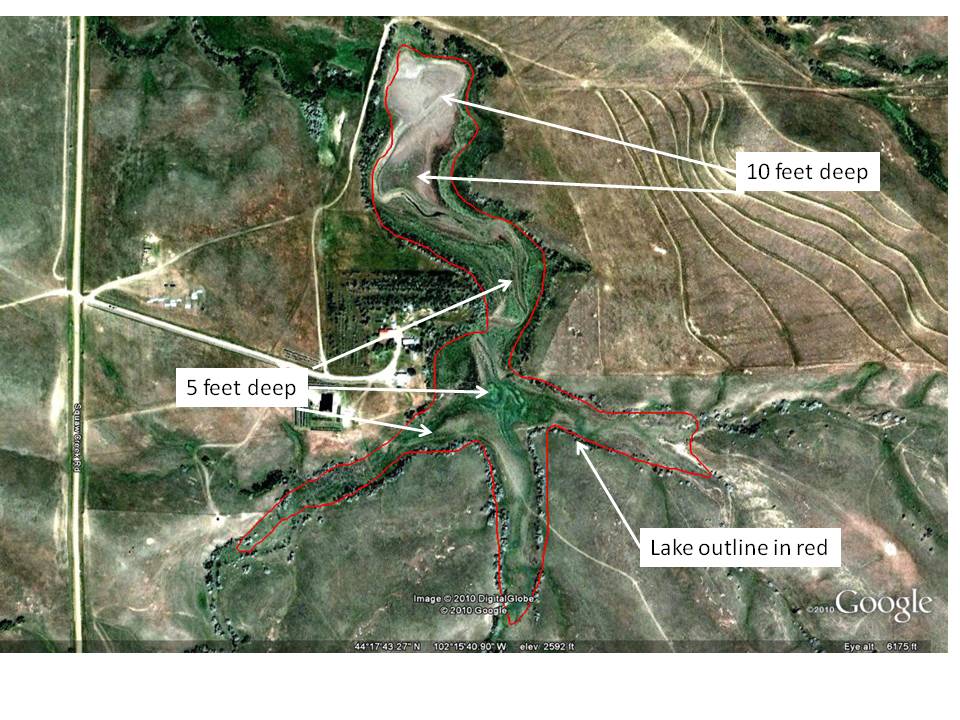
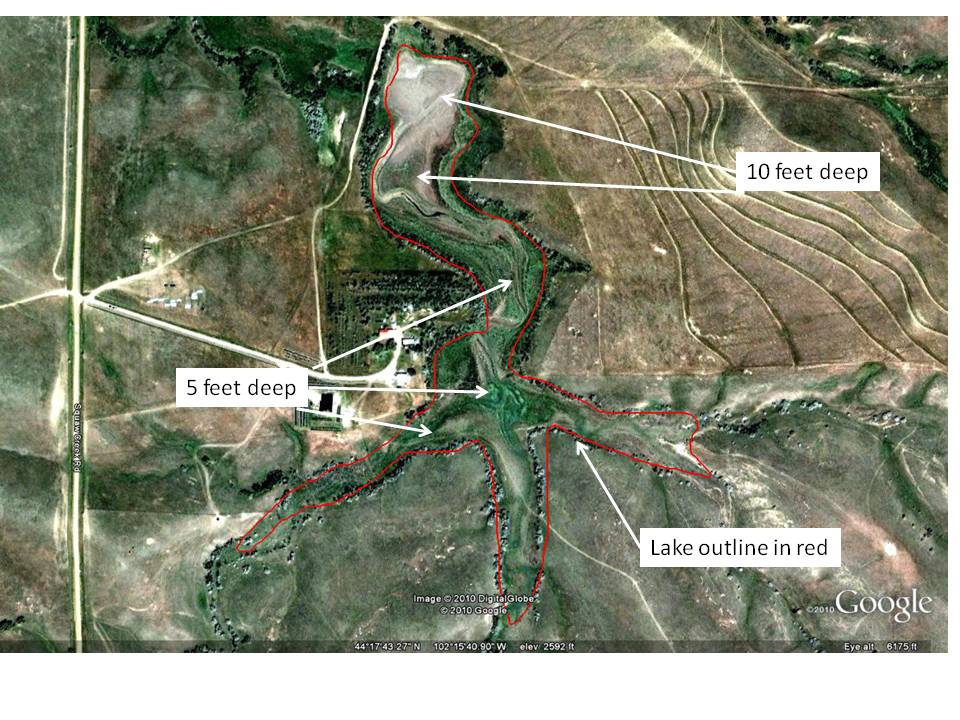
Your "10-12 acre lake" measured out to 22+ acres. I dotted it 3 times to be sure; once coming up with 32 acres (don't know what happened there; might be related to the remote location and low-resolution of the base-image).
My hunch is the 22~24 acre-range is likely.
How confident are you of the 10-12 acre estimate? And, from where did that estimate originate?

You can see the tracer-line more clearly on this image. Let me know if the measured shoreline-contour appears fairly accurate.
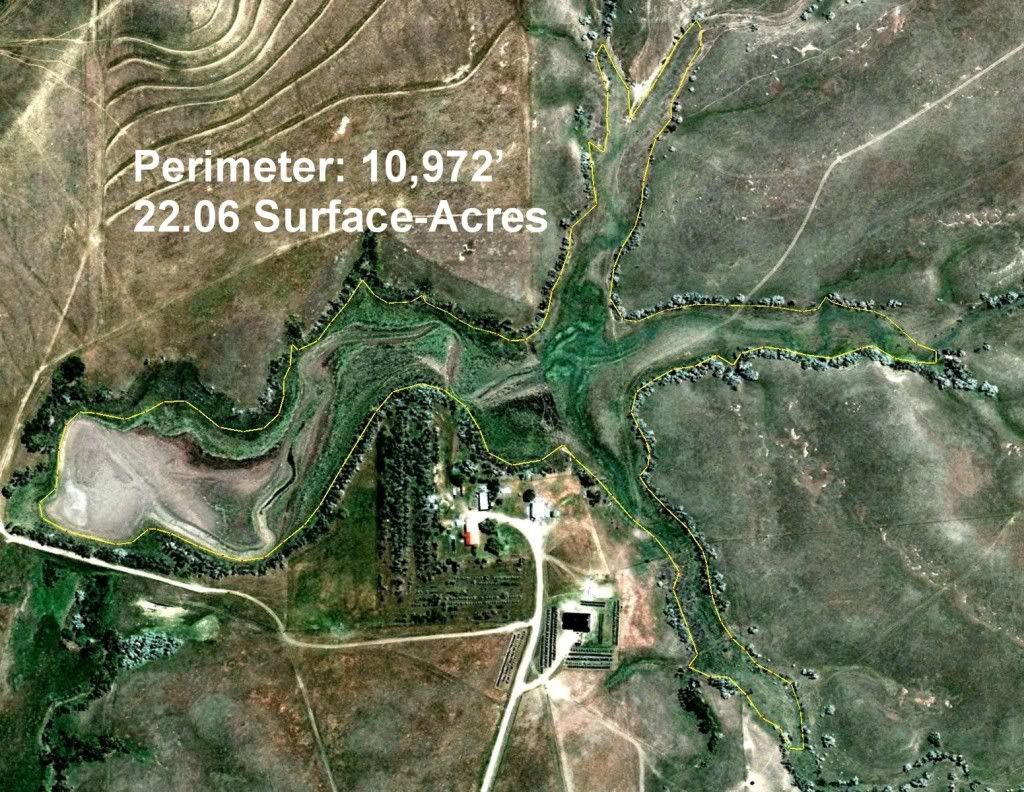
I used the counties mapping program which has a squar foot calculator in it. I'm pretty confident its 10 acres +- 1 acre. Those fingers add a lot of liner feet but not that much lake.
Here's another partial-lake measurement, with an inset square-acre for reference.
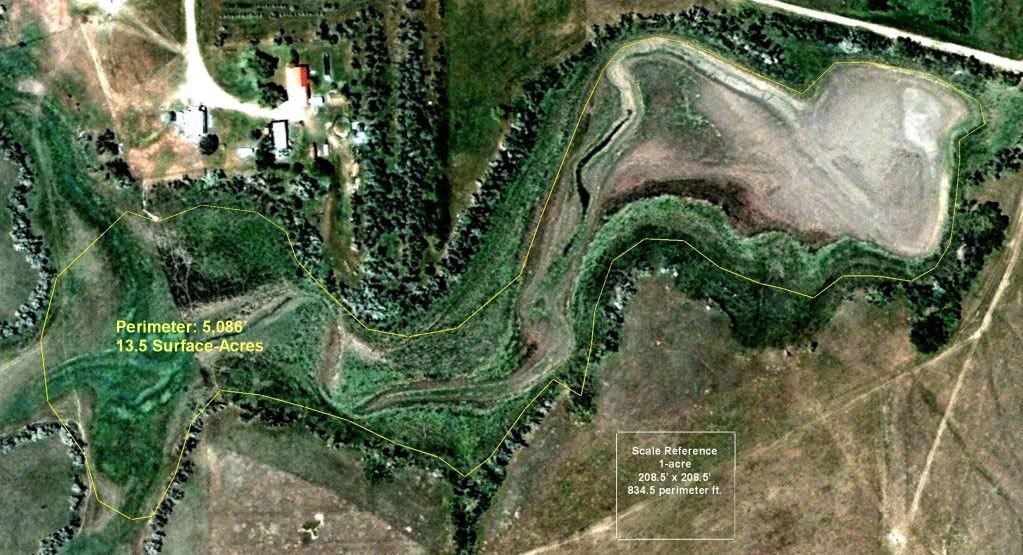
I'm not saying you're wrong, and I'm not saying I'm right. But, my experiences with this 2-dimensional measuring feature have proven it very reliable.
Edit: in reviewing my previous measurements and tracers, it is hard to believe that the lake's "fingers" could possibly represent 9-11 acres. I may measure them separately and see what turns up. Basically, I'm questioning the results of my remote measurements.
Confirming the lake's measurements - and theorical volume - become more critical as relative size increases, since that info will determine the necessary treatment-rates (& $) for certain products.
Wow, I bought a program called Easy Acres ($20) that works with Google earth to calculate area. You were right on. I got just under 24 acres. our lines were a little different so that explains that. Man, I was concerned about 10 acres I guess 24 is even going to cost more. I understand the issue about volume. I used that same tool to get some depth approximations. 8.5 acres @ 10', 5.5 acres @ 6' and 9.5 acres @ 4'. I tried to do some volume calculation with info I got on the web but I'm having a hard time believing the answers. What do you think??
DakotaDan, I admit I had to chuckle at wanting to claim your water is half the size of what it actually is. Most of us want to claim it's double the size of what it is.

All due respect Kelly but I can see why Zep questions whether that first picture is coontail. Eurasian watermilfoil has a hollow stem with four feather like leaves at each node and finely dissected to the midrib.
The leaves of coontail although similar the the WMF are forked with the ones at the growing tip being very compact like the first image. Not that it changes much regarding treatment.
Please help me understand why you are positive that it is WMF for my own education.
I will help out here. Water MF and the other species of milfoils have, as Blaine mentioned, leaves that are like a feather - a midrib with single 'leaflets' coming off the midrib as in a palm leaf or bird feather. Whereas in coontail the leaflets (not all but usu 2-3) will have a few Y branches. No Y branching on leaflets in left weed photo of Kelly's Sept 9th post (1:53pm).
The leaves of Eurasian watermilfoil and coontail are very different. I've always described coontail leaves as having the appearance of a snake's forked-tongue (which differentiates it from Chara's non-forked secondary stem). Eurasian watermilfoil leaves resemble a feather (with the individual filaments separated) rather than a snake's tongue.
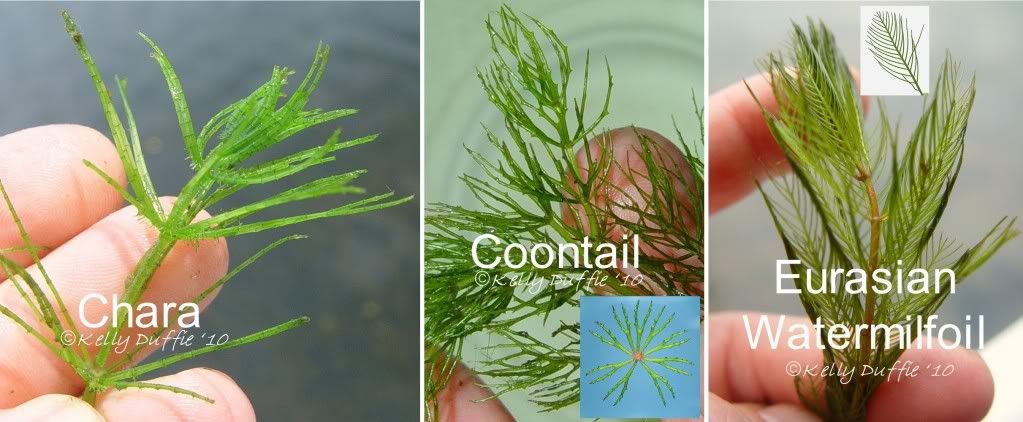
here are some good photos of Coontail, you have to look close but you can see the details that Bill Cody points out, you can also see the spike like structures on the outside of the leaves, I believe that's where is gets the common name Hornwort.
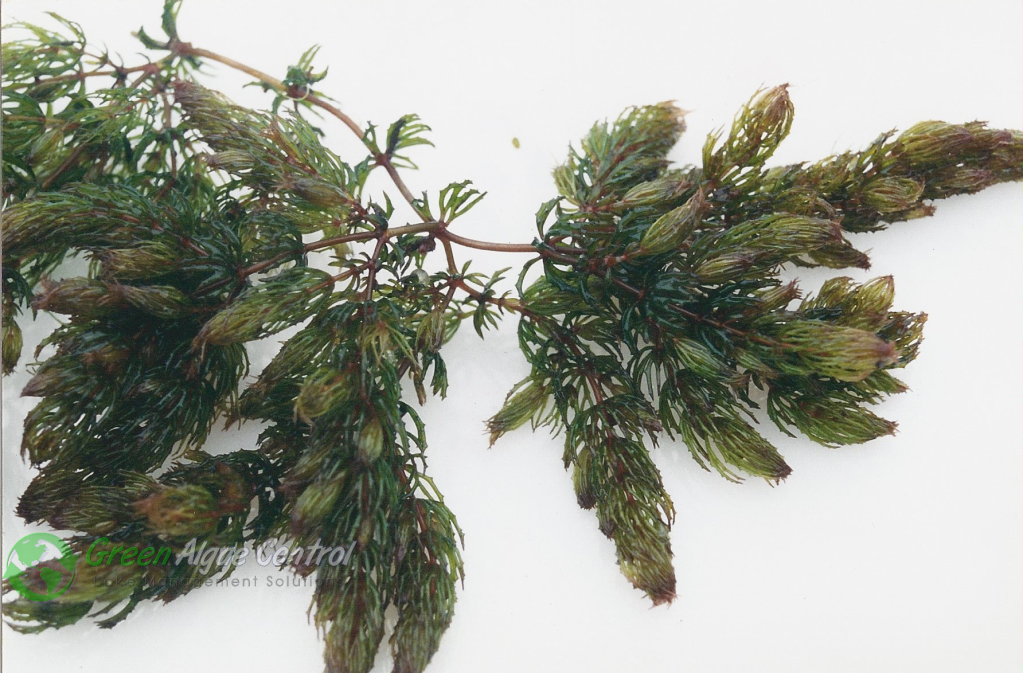
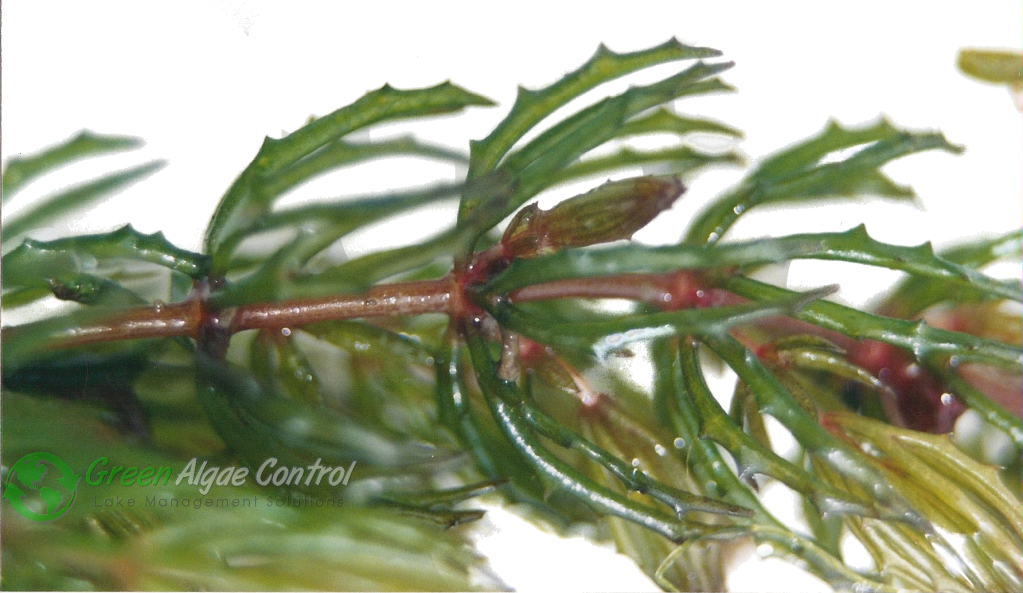
Nice photos Casey!
I was in Angleton today, and regret my visit to the local Taco Bell.
Hey I seem to be the new guy here but can anybody tell me the difference between Eurasian mifoil and Northern milfoil? I was talking with a lady at our GFP and she said that they only knew of two lakes in SD where Eurasian milfoil exist. She did say Northern milfoil was common. I havent been able to find much out about Northern milfoil and as someone else said I doubt it make a difference in the treatment but I was wondering.
Interesting. I've never encountered Northern Milfoil (Myriophyllum sibiricum) - and for good reason; it isn't found in Texas.
Here's a
Series of Maps that display the known ranges for various Myriophyllum species (the "milfoil genus").
Also,
THIS LINK includes a side-by-side comparison picture of Northern and Eurasian watermilfoil leaves.
Upon second inspection, your first photo could easily be northern milfoil (a native specie) - and probably is, since your contact indicated that it is common in your region.
As you mentioned, I suspect that most species within this genus will respond in a similar manner to any respective treatments. However, differing levels of sensitivity between the various milfoil species might require higher dose-rates OR allow lower dose-rates for acceptable control.
Kelly:
I read that link. I realize what business they are in, but what are your thoughts on the quoted statement: Registered aquatic herbicides such as endothall, 2,4-D and fluridone do provide temporary control of Eurasian milfoil, but efforts to eradicate the plant "are rarely, if ever, likely to succeed" (Smith CG, Barko JW. 1990. Ecology of Eurasian watermilfoil. Journal of Aquatic Plant Management 28:55-64).
I really didn't focus on that site's "business", but I would generally agree with their statement; particularly when large bodies of water are involved.
As with cockroaches or fleas in a large house, once an invasive plant specie gains a solid foothold within a lake, one's ability to eradicate it is greatly diminished. Although it might be possible to "manage" or "control" entrenched pest-infestations, permanently eradicating prolific and tenacious organisms is quite another story. In that respect, they're similar to a virus.
An insecticide or herbicide treatment, as the situation requires, may readily control the "parent" insect or weed. However, if the parent organism has already produced eggs or seeds prior to its demise, the resulting progeny will undoubtedly cause problems at some point down the road.
For this reason, and in both scenarios, prevention is the key. Otherwise, dealing with such pests when they first appear is paramount to limiting their potential as a long-term problem.
Edit: I reviewed the site to see what prompted your question. I still agree with their statement, but also believe that biological methods ALONE are also rarely successful in eradicating a well established invasive specie; and may occasionally pose their own secondary problems. I fully endorse the use of all "tools" in the toolbox. In many cases, a combination of tools far exceeds the individual benefits associated with any single tool (i.e. synergy).
Kelly, well put and I agree 100% with what you said.
Well, I talked with my guy at the local university and he's quite sure I have Northern Milfoil for the reasons I stated earlier. I asked about the weevil and he gave me the attached artical and told me to use a granular 2 4 d product with spot spraying. I asked about Fluridone but he didn't take the bait.
I did think the artical was interesting though.
Does anybody have any thoughts on how to reduce my costs of either Fluridone or Granular 2 4 D.
I will add file later as I am having problems with the file manager.
Dan - It might help to define your objectives; both short-term (1-yr) and long-term.
If you're only interested in clearing a swim-whole and possibly some fishing "alleys", that's one thing. But, if you're interested in managing the offending plants throughout the lake, that's another thing.
Both objectives will likely require an annual investment to one extent or another.
Either way you go, don't attempt to save too much - and risk losing any benefit from the investment.
In the long term I would like to manage the whole lake to make it something a guy can be proud of. I guess in the short term I would like to be able to fish and swim.
Dan - I'm truly not attempting to split hairs or overcomplicate the task. However, a specific list of objectives and a realistic assessment of available resources are needed to formulate a viable overall management plan - ESPECIALLY for a 20+ acre lake. Your objectives & goals may significantly differ from those that might otherwise make your neighbors proud of their lakes.
The potential list of objectives might contain one, or twenty-one+ goals.
Ex: 1) 20-40% vegetative-cover for optimum fishery habitat. 2) a 2-acre swim-area that is void of vegetation and obstructions, located along a readily accessible and appropriately sloped shoreline. 3) A balanced population of forage fish and xyz gamefish to emphasize maximum catch-rates of moderate-sized fish (or, alternately, a lower catch-rate of trophy specimens).
Available resources: 1) $xx annual investment budget 2) x# of hrs-per-month for labor & mgmt activites 3) required equipment (purchased, leased or contracted).
An overall plan should be oriented around your identified objectives, resources & limitations. Without such assessments, it is very possible to spend a lot of time, effort and money and never achieve your ultimate objective(s). Don't attempt to pave a 1-mile dirt road with a wheelbarrow full of asphalt.
Some of us can provide "input" for managing your lake's vegetation, while others can give "direction" on fishery management aspects, and so forth - but not without better clarifications of your goals, resources & limitations.
In view of the size of your lake and its represented condition, I suspect a private consultation session with a qualified lake management company is likely your absolute best initial investment.
OK I'm starting to get it.
I would, as you state like to have an optimmum fishery first as a swimming hole is secondary so I guess 20-40% vegetative growth. I would also as you say like to have a clear 2 acre swimming hole in the middle of the lake where it is a little deeper. I would like to put in a dock and be able to park a boat there and do a little fishing off it. Otherwise my fishing will be from a boat. I would also like to be able to boat around the lake for pleasure.
I just got a water sample back from the DENR as they did a study this summer and they are telling me "One number that did catch my eye was the phosphorus, it is quite a bit higher than what we would expect to see in the western prairies. I am uncertain what has happened in the lakes past, perhaps the farm site had a feeding area on it that drained into the lake? The plant community is a bit healthier than expected or desired, and this is a function of the high nutrient concentrations" and "The high levels of nutrients are also the cause of the low Oxygen concentrations in portions of the lake, decaying organic matter consumes it.". It just keeps getting better.
Is grass carp a option? My budget would probubly max out around 2K per year. Maybe 5K in one year but then is has to settle down. I do not live on the ranch and visit it about once to twice a month during the spring,summer,fall so I do not have a lot of time to dedicate toward it.
Due to the primary plant specie involved (milfoil), I doubt if grass carp are a viable option by themselves. But, they might play a role in the overall management plan.
With the size and complexities associated with your lake, I think your best initial course of action would involve the previously mentioned consultation with a qualified lake management professional in your region. Personally, I don't know of any "way up there". But, it would be worth your effort to ask around. One potential source for information and/or locating a reputable lake mgmt professional might be
Dr. Chipps at SDSU.
I'll be the first to admit that the last thing you need is specific lake management advice from a Texan. So, hopefully, Dr. Chipps will be able to steer you in the right direction. At least you're now able to convey more precisely the objectives that you want to accomplish.
Good luck! - and keep us posted.
Edit: just remembered that you had already spoken with someone at a "local university". It wasn't Dr. Chipps, by chance?
Grass Carp and Milfoil are about like me and broccoli, I'll eat it before I starve to death but otherwise it ain't gonna happen. In my experience I've seen very little if any results from stocking Triploid Grass Carp in lakes or ponds that are primarily Milfoil. As Kelly mentioned that may be because of the differences in our growing season (ours(Texas) is probably 9 out of 12 months). Looking at the list Milfoil is listed 14th on the preferred food list, may be worth a try though if you are on a budget. Best of luck!
So Tilapia don't really like Milfoil or Coontail either?
Tilapia will eat both plants, but you never really know what plants tilapia will eat first in any given year or body of water.
The only reason I didn't shoot down grasscarp altogether was because of some other species (besides milfoil) that Dan posted picture of in an earlier thread.
As for milfoil's growing season: I understand that some species of milfoil will actively grow under ice (cold-water hardy). Of course, I've never had the opportunity to investigate that rumor down here.
Regarding tilapia: are South Dakota water-temps actually warm enough for a sufficient time-span to allow an "affordable" stocking-level of tilapia to effectively populate a 20+ acre lake before they all kick the bucket?
Thanks Rainman....
I think I will try both the carp & tilapia
as a couple of parts of a bigger puzzle.
The only reason I didn't shoot down grasscarp altogether was because of some other species (besides milfoil) that Dan posted picture of in an earlier thread.
As for milfoil's growing season: I understand that some species of milfoil will actively grow under ice (cold-water hardy). Of course, I've never had the opportunity to investigate that rumor down here.
Regarding tilapia: are South Dakota water-temps actually warm enough for a sufficient time-span to allow an "affordable" stocking-level of tilapia to effectively populate a 20+ acre lake before they all kick the bucket?
Tilapia are not legal, nor probably practical for a South Dakota lake....My response was directed at Zep's specific question.
Actually I talked with, Brian D.S. Graeb,Assistant Professor
South Dakota State University
Department of Wildlife and Fisheries Sciences
In conclusion it sounds like there is no magic bullet. My only resonable option is to make some fishing lanes and if I want a swimming hole by using a granular 24D (Navigate) or some sort of Fluridone chemical this spring. With the high Phosphorus and Low oxigen I supose you could aerate but with a lake this size I can imagine it will only have limited success.
I guess we will see what spring brings.
Thanks for the help.
Regarding tilapia: are South Dakota water-temps actually warm enough for a sufficient time-span to allow an "affordable" stocking-level of tilapia to effectively populate a 20+ acre lake before they all kick the bucket?
Thanks Rainman....
I think I will try both the carp & tilapia
as a couple of parts of a bigger puzzle.
I personally have had more expeience with tilapia than most folks on PB forum, second only to our missing friend Meadowlark, who I credit for popularizing Mozambiqe tilapia in Texas.
Our tilapia program has been very successful in our N.E. Texas ponds for FA control, in addition to increased and improved forage.
I have NEVER experienced vegetation control or muck removal with tilapia. Perhaps blue tilapia in northern waters will provide these benefits, and if so I would be interested in forum member reports.
George I am sorry...but a rookie is confused!
"Our tilapia program has been very successful in our N.E. Texas ponds for FA control" (FA = filamentous algae(pond scum or moss)
"I have NEVER experienced vegetation control or muck removal with tilapia"
To a rookie like me these two statements you made appear to contradict themselves. Please enlighten me and be gentle....lol. I am confused because you seem to say tilapia are "very successful" for pond scum but then in the next sentence you say tilapia are not good on "muck". So I am assuming "muck" and "pond scum" are different things?
ZEP, sorry about that - FA (filamentous algae) is commonly referred as pond scum, but my understanding that the term "muck" is used for dacaying organic materials and silt build-up on pond bottom.
Ok George I gotcha....sorry still learning the language.
Believe me I often refer to the abbreviations page
when I get lost within the
pond-guru-lingo. (
PondBoss Abbreviations:)
In fact I think they should add the abbreviation page
link to the side bar like "recent posts" because often
new members don't know it exists and probably can not
figure out what they are reading.
As a rookie I guess I was lumping
scum/moss/muck/vegetation all-together
but it is interesting seeing how they
are all very different and require
different "prescriptions".
Howdy ya'll. I'm new to the site. I own and operate Aquatic Management and Consulting out of Clermont, Fl (30miles west of Orlando). We do quite a bit of stormwater system and lake management along with a lot of wetland mitigation maintenance and creation. Also have mucho experience in many fields of environmental permitting and endangered species work.
No actual report. Published scientific data report the deepening of lakes by up to 6 inches in a year due to tilapia eating muck. They strain bottom muck to sort out the organic matter which the eat expelling the dirt.
Hello,
I just wanted to make an update and an additional request.
First. Subsurface injection of Aquatic 24d works well on Norther milfoil.
I have attached some other plants from my pond that were not effected by the 24D and am having problems with there identification. Please take a look and see if anyone has some ideas
Thanks
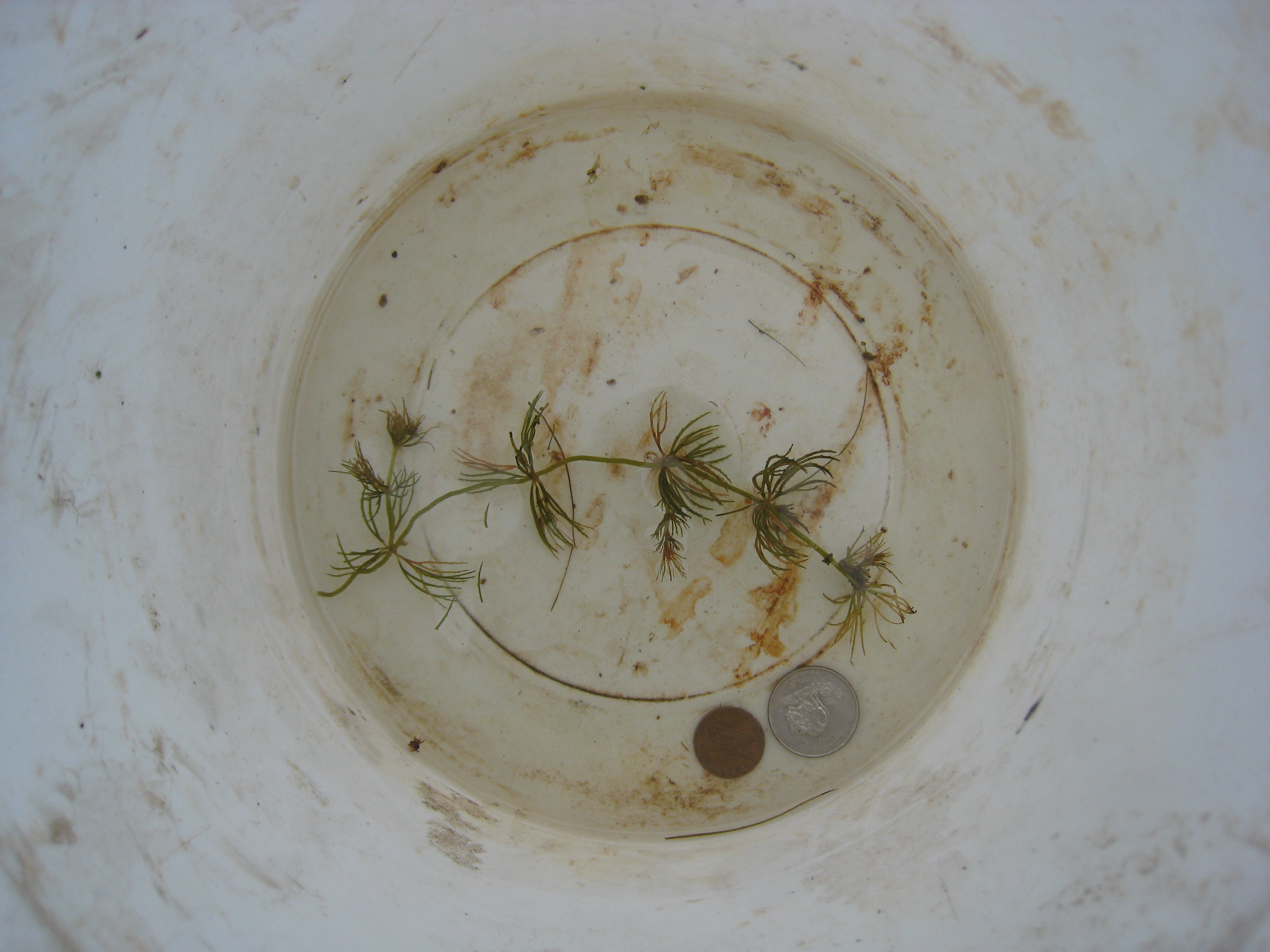
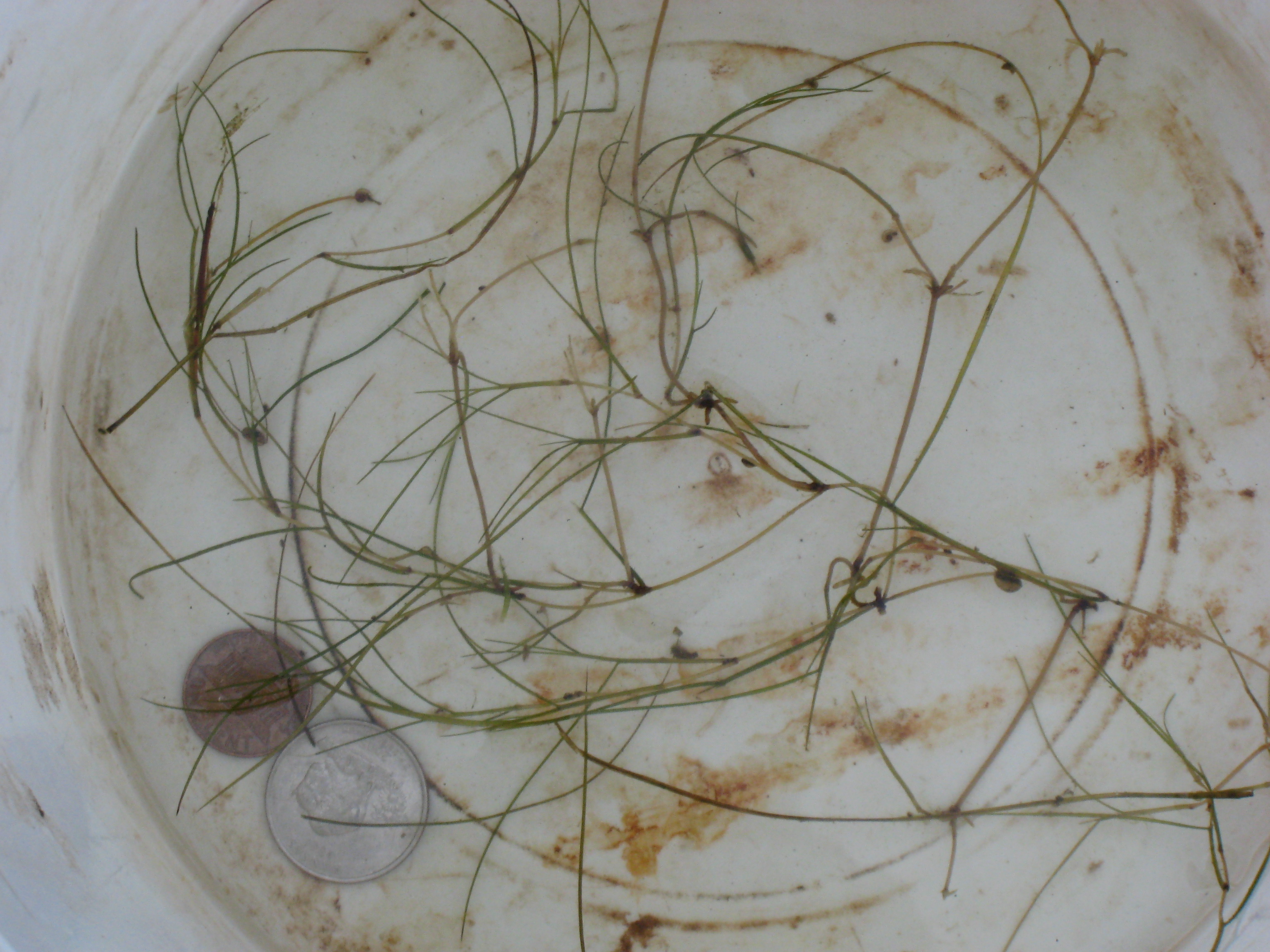
Dan, I'm not sure about 051, but 048 is in the Potamogeton family. narrow leaf, horned or something like that. It doesn't look like Sago to me. Hopefully Kelly or Bill will chime in shortly.
051 is coontail. Not its typical appearance, but still coontail. Probably a reaction to your 2,4-D treatment. The auxin does strange things to coontail - but rarely controls it (based on my experience).
048 isn't a specie that I encounter down here. You might be right with narrow-leaf, but not certain.
Just an update.
I "asked an expert" at Aquaplant and he thought 051 was Chara. I've gone after it with a combination of Copper sulfate and Diquat. I'm curently waiting to see if it helps. I will report back later.
Just an update.
I "asked an expert" at Aquaplant and he thought 051 was Chara. I've gone after it with a combination of Copper sulfate and Diquat. I'm curently waiting to see if it helps. I will report back later.
I have a lot of respect for Dr. M @ Aquaplant, but I'm 100% certain that pic#051 is coontail.
Chara branchlets don't fork.
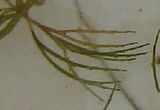
As for your treatment: the selected products are probably more appropriate for coontail than Chara - although AQUATHOL would have been my preference, depending on the situation. In any case, you should see some decent results - assuming you achieved the necessary concentrations for a sufficient period of contact-time.
I and numerous idenification sources agree with Kelly the simple needle like leaves of Chara do not fork. Someone at aquaplant missed this important feature of Chara.
Well, I'm no expert so I won't hazard a comment but my weed problem is solved. I don't know which chemical handled I jsut know its handled. Anyway, thanks for all the help and I'm going fishing


